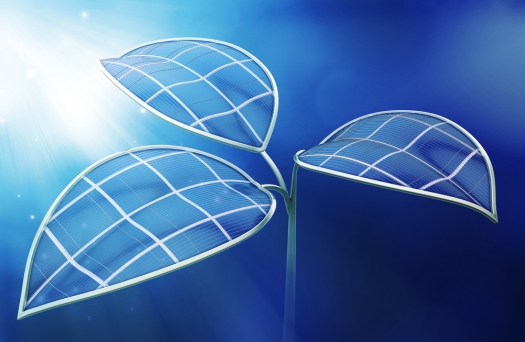Improved storage for solar technology

By replacing platinum with molybdenum in photoelectrochemical cells, scientists from two EPFL labs have developed a cheaper and scalable technique that can greatly improve hydrogen production through water splitting as a means of storing solar energy.
Solar energy appears to be the only form of renewable that can be exploited at level that matches the world's growing needs. However, it is equally necessary to find efficient ways to store solar energy in order to ensure a consistent energy supply when sunlight is scarce. One of the most efficient ways to achieve this is to use solar energy to split water into hydrogen and oxygen, and get the energy back by consuming hydrogen in a fuel cell. Publishing in Nature Communications, scientists from two labs at EPFL have found a method to create a high-efficiency, scalable solar water splitting device using cheap materials.
Although one of the best means of sourcing renewable energy, solar systems cannot consistently produce adequate energy since sunlight varies from time to time and place to place. A solution to this problem is a device that can store energy in the form of hydrogen for later use, offering a consistent output over time with very little pollution.
One of the most sustainable methods of producing hydrogen is photoelectrochemical water-splitting. Solar energy is used to break water molecules into hydrogen and oxygen through a process called "hydrogen evolution reaction". This reaction requires a catalyst, which is a chemical agent that increases its speed. In photoelectrochemical water-splitting devices, a common catalyst used to split water is platinum, which is deposited on the surface of the solar panel's photocathode "“ the solar panel's electrode that converts light into electric current.
A research team at EPFL has now found a way to make efficient solar-powered water splitting devices using abundant and cheap materials. The group of Xile Hu developed a molybdenum-sulfide catalyst for the hydrogen evolution reaction, and the group of Michael Grätzel developed copper(I) oxide as a photocathode. The researchers found that the molybdenum sulfide can be deposited on the copper(I) oxide photocathode for use in photoelectrochemical water splitting through a simple deposition process that can be easily expanded onto a large scale.
The technique shows comparable efficiency to other hydrogen evolution reaction catalysts like platinum, it preserves the optical transparency for the light-harvesting surface and it shows improved stability under acidic conditions, which could translate into lower maintenance. But more importantly, both the catalyst and the photocathode are made with cheap, earth-abundant materials that could greatly reduce the cost of photoelectrochemical water-splitting devices in the future. According to senior author Xile Hu, the work represents a state-of-the-art example for solar hydrogen production devices.
Reference:
Morales-Guio CG, David Tilley S, Vrubel H, Grätzel M, Hu X. 2013. Hydrogen evolution from a copper(I) oxide photocathode coated with an amorphous molybdenum sulphide catalyst. Nature Communications, 8 January 2014


































